Contents
- 1 Beijing
- 2 Shanghai
- 3 Chongqing
- 4 Tianjin
- 5 Taiwan
- 6 Hong Kong
- 7 Macau
- 8 Hainan
- 9 Yunnan
- 10 Anhui
- 11 Jiangxi
- 12 Tibet
- 13 Xinjiang
- 14 Inner Mongolia
- 15 Heilongjiang
- 16 Jilin
- 17 Liaoning
- 18 Shanxi
- 19 Shandong
- 20 Hebei
- 21 Henan
- 22 Gansu
- 23 Qinghai
- 24 Ningxia
- 25 Shanxi
- 26 Sichuan
- 27 Hubei
- 28 Hunan
- 29 Guangdong
- 30 Guangxi
- 31 Guizhou
- 32 Fujian
- 33 Jiangsu
- 34 Zhejiang
What are you expecting to see and experience in China? China is such a huge country with a vast land that presents diverse landscapes and climates. All these natural and cultural touring attractions distributed in different corners of the 34 provinces in China are all places worth exploring and traveling in China.
Today, let’s have a quick look together at the total 34 provinces in China and the highlights of each province.
Beijing

As the capital of China and the economic, political, and cultural center, Beijing is always so lively, crowded with tourists from all over the world all year round. Everyone has their own fantasy of Beijing. It could be dreaming about living in the legendary Purple Forbidden City, traveling through Beijing’s alleys and courtyards, and visiting the Great Wall. Walking into this ancient capital, you will appreciate its grandeur and vitality.
Shanghai

Shanghai is the largest city in China. It is the economic, financial, trade, and shipping center of China. At the same time, it is also a very modern international metropolis without losing traditional Chinese characteristics. It is a famous “shopping paradise” in China besides Hong Kong, and it is also the closest connection between China and the world.
Learn Chinese in Shanghai vs. Kunming Yunnan
Chongqing

Located at the confluence of the Yangtze River and Jialing River, Chongqing is famous as “the city built on a mountain” because of its special geographical structure and architectural style. People joked that driving here is as interesting as a roller coaster. Foggy weather is often seen here because of the humid and sultry climate, so it is also called the “Mist City.”
Due to the high temperature here in summer, there is another nickname for Chongqing, “Firing stove,” which is just as hot as the food here, and it directly reaches people’s hearts.
Tianjin

Due to its proximity to the capital, Tianjin in modern history has become a place for people of all kinds to escape or hide their powers.
At the same time, because of its colonial lease status, Tianjin has left many typical foreign buildings and has the reputation of “World Architecture Museum.”
Walking through the relics of various concessions, it feels as if you are in a foreign country. While admiring the strange street scene, don’t forget to experience the most famous local cross-talk art and Goubuli steamed bun.
Taiwan

Taiwan is not large, but it is all-encompassing. You can appreciate that each place exudes a different style from cities to villages, mountains to seas, valleys to lakes. Taiwan’s railway system is more developed and more comfortable, so taking Taiwan trains is a major way of traveling on the island of Taiwan. Taiwan has more than 4 hundred night markets of various sizes. Going to the night market is the best way to experience Taiwanese snacks.
Hong Kong
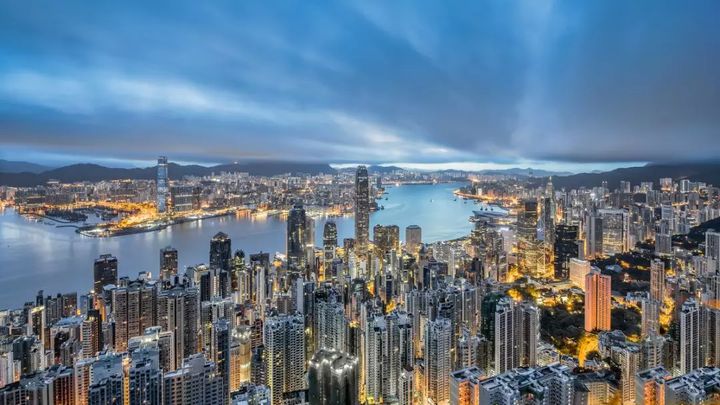
Hong Kong’s huge cultural differences have created its status as an international metropolis as a gathering point of Chinese and Western cultures. Hong Kong is an all-encompassing city. It is a bustling city that never gets quiet. If you want to feel the real authentic Hong Kong, go to the Mong Kok. Hong Kong is also a place that gathering all kinds of delicious. Foods that you cannot miss include freshly baked pineapple oil bread, Hong Kong-style milk tea on the corner of the street, snack food curry fish meatballs, morning tea with dim-sum, the egg tart after a meal, the sweet soup, and other desserts for the night food.
Macau

Macau is a city that enjoys both low-key and luxurious senses. Even if you are not a gambler, you may step into the Lisboa Casino in Macau and be frightened by the world’s top high-rollers. Macau also retains the Mazu culture that it has as a fishing village in the early years. When you come to Macau, you must go through its streets. Walking slowly and taking a closer look so that you can taste the authentic lifestyle of Macau.
Hainan
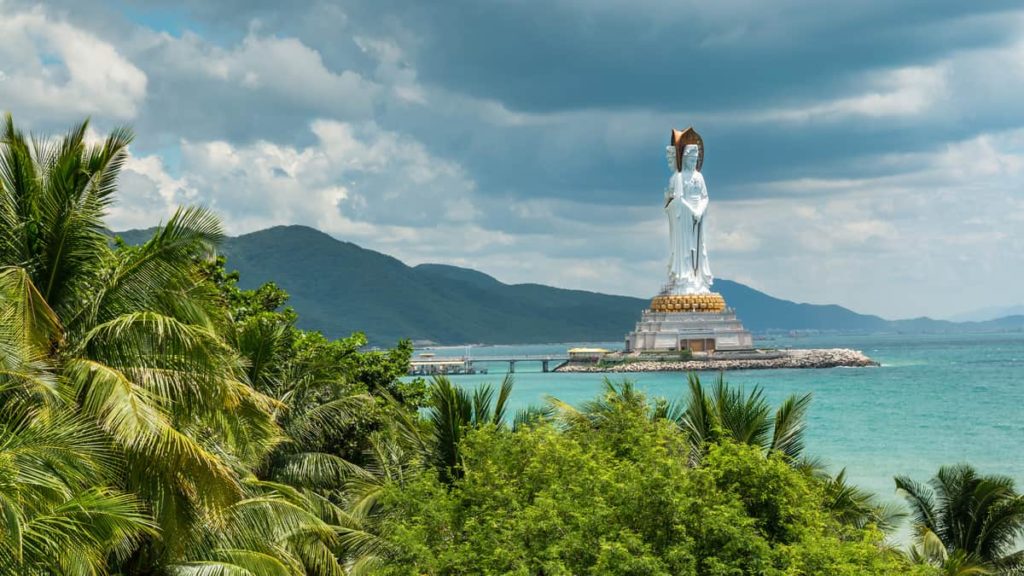
Hainan is a shining pearl in the South China Sea. It has been endowed with the most pleasant climate, the warmest sunshine, the most azure water, the softest beaches, the most delicious seafood, and fruits. Now, this southernmost island in China is also the biggest tax-free zone.
Yunnan

There is no need for using the air conditioner in Yunnan, for it has the mildest climate in China. The life of Yunnan people is leisurely and comfortable, and the most common breakfast for locals is rice noodles.
The climate here in Yunnan is divided into dry and wet seasons. Every year in the wet season, there are a variety of delicious wild mushrooms to enjoy. Because of the abundance of flowers and the largest flower trading market, flowers can be seen everywhere in Yunnan, and they are often used for food.
The mountains of Yunnan are lingering with clouds; the water of Yunnan is full of vitality; the people of Yunnan are simple and kind. Thousand years of history, multi-ethnic and multi-cultural blending, jointly form a unique land of the colorful Yunnan.
Why should you learn Chinese in Kunming, Yunnan?
Anhui

Anhui not only has the magnificent scenery of Huangshan but also the elegance of Huicun. Huizhou architecture has its typical style, with the unique horse-head walls; you can easily recognize it. During spring and autumn, countless tourists are attracted by its beauty.
Anhui is also the hometown of rice paper and Hui ink. The signature dish here is the famous smelly mandarin fish.
Jiangxi

Since ancient times, Jiangxi has been rich in various natural resources and humanities. Many cultural relics and scenic spots: Lushan mountain, Tengwang Pavilion, Sanqingshan Mountain, Wuyuan, Longhushan, Jinggangshan, etc., are famous domestically and abroad.
Tibet

As mysterious as the back of the moon, Tibet has become a new totem for modern urbanites and the ultimate holy place for travelers. People in the snowy plateau seem to be born to pray for all beings. They are chanting the scriptures, turning the prayer wheel, and doing kowtow every day. Day after day, year after year, this is their lifestyle.
The landscape of this land and the religious beliefs of its people give Tibet a sense of mystery. Tibetans use prayer wheels instead of chanting. Except for the large prayer wheels in temples, the most common one is the small prayer wheels, one of the most popular gifts for tourists.
Xinjiang

In Xinjiang, rivers venting thousands of miles away, grasslands spreading in thousands of hectares, bizarre Gobi illusions, mysterious desert wonders, and well-preserved primitive flora and fauna. You will see a very different part of China here in this unique Xinjiang area.
Inner Mongolia

There are many beautiful sceneries in Inner Mongolia, such as Hulunbuir, Ordos, Oroqen, Tengger Desert, Daxinganling, etc. The grasslands, lakes, deserts, and forests of Inner Mongolia and the characteristic yurts and flowing cattle and sheep constitute a typical picture of northern China.
Heilongjiang

Heilongjiang is located in the northernmost part of China’s territory. It used to be called the “Great Northern Wilderness,” but now it has undergone vicissitudes of change. The undulating large and small Xing’an Mountains are in this magical land, the Songnen Plain with thousands of miles of fertile fields, the scenic Jingpo Lake, Wudalianchi Lake, and the green natural pastures. All of these elements scroll a gorgeous picture here together.
You must go to Heilongjiang in wintertime and watch the local ice sculptures show while eating icy popsicles. Every year, Harbin, the capital city of Heilongjiang, has a grand ice sculpture festival, even dreamier than Disney.
Jilin

Jilin is the birthplace and settlement of the Manchus group. The Manchus group once ruled the land of China for more than 200 years, which is the Qing dynasty in Chinese history. More than 60% of the Manchus group in China live in Jilin, and the province name “Jilin” comes from the Manchu language.
The Changbai Mountain Nature Reserve in the east of Jilin is a magical place that has attracted the world’s attention. The legend about the Tianchi monster in Changbai Mountain adds a bit of mystery to it. Changbai Mountain also has deep-seated natural mineral water, one of the world’s three major golden water sources. The rime scenery of Jilin Province is known as “a spring scene in winter” and is one of the four natural wonders of China. It has a reputation for its poetic and picturesque style. You cannot miss this scenery in winter.
Liaoning

The folk customs of Liaoning are simple and natural, and its coastline of 2,177 kilometers shows the majesty of North China. Liaoning is close to North Korea, so the local cuisine also incorporates North Korean flavors. At the same time, Liaoning people also have a persistent love for dumplings. No matter when there are guests at home, a family meal, and on New Year’s Eve, there must be a plate of dumplings on the dinner table.
Famous local attractions in Liaoning include Shenyang Forbidden City, Zhaoling, Fuling, Zhang’s Mansion, Bingyugou, Bangchui Island, Laohutan Ocean Park, Jinshitan.
Shanxi
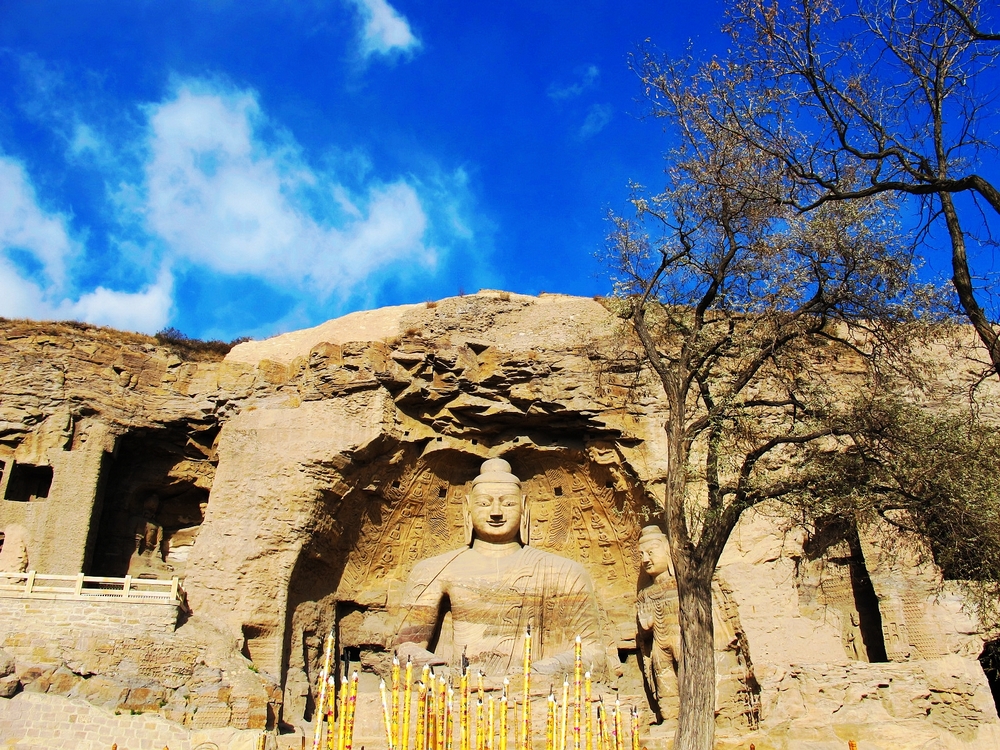
Shanxi has a long history and a rich cultural heritage. So far, there are three thousand years of the written history of Shanxi. It is known as the “Museum of Ancient Chinese Culture” and is also known as the “Cradle of Chinese Civilization.” The legends of “Jingwei reclaiming the sea” and “Nuwa patching the sky” are Shanxi.
Shanxi people love to eat noodles. In the eyes of Shanxi people, nothing can compare to a bowl of steaming hot noodles.
Shanxi’s aged vinegar is well-known throughout the country, and it is also a commonly used seasoning in Chinese households.
Shandong

Shandong is one of the birthplaces of ancient Chinese culture. This great land is not only famous for its magnificent landscape but also its splendid civilization history.
One of China’s five famous mountains, Mount Tai, is also located here. You must be mentally prepared before climbing this mountain. It is expected to take 5-7 hours to approach the top.
Qingdao city in Shandong is a famous beer-producing area in China. On the local roads, you can often see someone carrying a plastic bag filled with yellow liquid. It is a native of Qingdao who has just got his loose beer and is ready to go home.
Hebei

Hebei Province is the only province with landscapes, including plateaus, mountains, hills, plains, lakes, and seashores.
There is also a famous scenic spot, Chengde Mountain Resort. Chengde Mountain Resort is built on the mountain, with the charm of Jiangnan gardens. Its construction period crossed the Kangxi, Yongzheng, and Qianlong eras of the Qing Dynasty, which took 89 years to build. It is the largest ancient imperial palace in China.
It is close to both Beijing and Tianjin and is the gateway from Beijing to other places.
Henan

The famous Shaolin martial art is originated in Henan. The peony planted in Luoyang, Henan Province is even known as the “King of Flowers.” Every year, at the Peony Festival, people will travel from every corner to here just to see the showy beauty of peonies.
Henan is also one of the main birthplaces of the Chinese nation. In history, more than 20 dynasties established their capitals here. As far back as the Neolithic Age, four thousand years ago, the people of Central Plains (Henan area is part of this plain) created the famous “Peiligang Culture,” “Yangshao Culture,” and “Longshan Culture.”
Gansu

Gansu has a hot and humid climate with a beautiful landscape. Only the most north-western part of this area is dry and rainless. It is the barren mountains and Gobi.
Gansu is like a magnificent gem, inlaid on the Loess Plateau, Qinghai-Tibet Plateau, and Inner Mongolia Plateau in central China.
The famous touring attractions here include Dunhuang Mogao Grottoes, Mingsha Mountain, Crescent Spring, Gannan, Jiayuguan, Zhangye, etc. The scenery of these spots is breathtaking.
Qinghai

Qinghai is the origin place of the Yangtze River, the Yellow River, and the Lancang River. It is known as the “source of the river.” The natural scenery here is magnificent and has the characteristics of the Qinghai-Tibet Plateau. Six or seven thousand years ago, the ancient ancestors were living on this land. 54 of the 56 ethnic groups gathered here, so the festival celebrated here is always lively.
Ningxia

Ningxia drainages water from the Yellow River for irrigation, which turns this barren land into fertile land like the south of China. By rafting on the Yellow River, riding a camel on the dunes to watch the sunset, and visiting the houses of the Hui nationality, you can really enjoy the sun of visiting Ningxia.
Shanxi

Shaanxi is one of the birthplaces of Chinese civilization, divided into areas of southern Shaanxi, Guanzhong, and northern Shaanxi. There are people from Lantian in Xi’an at the early stage of human birth and Chang’an, one of the world’s four largest ancient capitals. This is also the birthplace of Emperor Yan and Emperor Huang, who have been admired for generations. It has Mount Hua, one of the five great mountains of China.
Sichuan

Fertile land, rich natural resources, long history, and colorful ethnic minority culture jointly constitute the unique charm of Sichuan. Sichuan cuisine is one of the eight major cuisines in China. It occupies an important position in the history of Chinese cuisine. It uses a wide range of food materials and has many flavors. Sichuan cuisine is famous for its variety of dishes, fresh and mellow taste, and its good use of spicy.
Hubei

Hubei has the Shennongjia forest area, known as the “Roof of Central China” and the “Green Treasure House.” Not only is there a wide variety of rare animals, but the “Mystery of the Wild Man” is even more interesting. Hubei has the ancient human Changyang people site, many ancient Three Kingdoms sites, and the Chu capital site “Jinan City.” Natural scenery and historic culture coexist here. Famous tourist attractions include Yellow Crane Tower, Hubu Alley, Enshi Grand Canyon, East Lake, Three Gorges Dam, Wuhan Yangtze River Bridge, etc.
Hunan

Hunan is an inland province located south of the middle reaches of the Yangtze River in south-central China. It is named Hunan because most of its area belongs south of Dongting Lake. It is also referred to as “Xiang” because the Xiangjiang River runs through the whole province. More than half of the province is the Xiangjiang River Basin and Dongting Lake basin. The land of Hunan is fertile, and the transportation here is convenient too, making Hunan an important place of origin and reproduction of ancient Chinese humans.
Guangdong
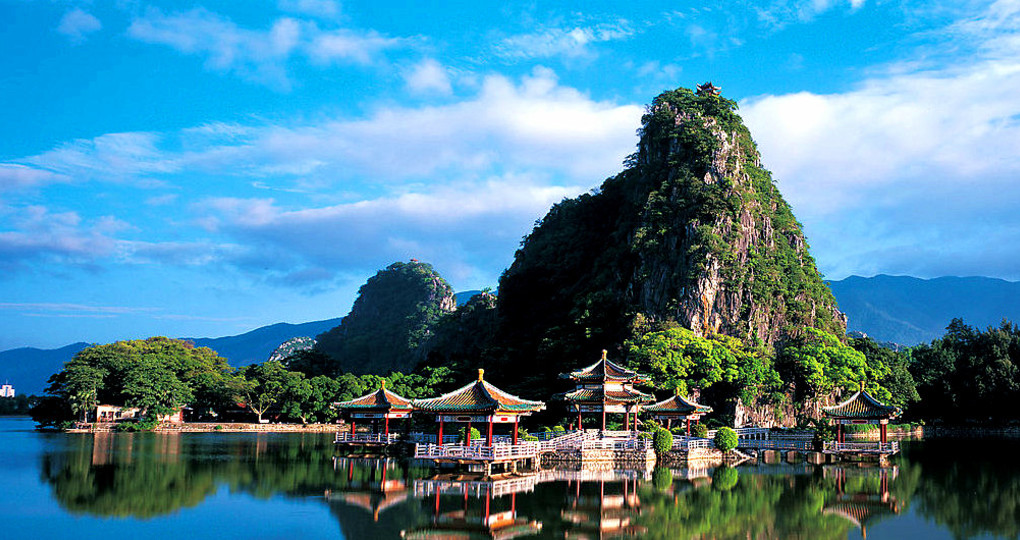
The landscape of Guangdong attracts tourists’ attention all over the world. Zhaoqing Seven Star Rock has the beauty that can compare with Guilin Mountain and Hangzhou’s lake. Danxia Mountain in the north of Guangdong, Xiqiao Mountain in the South China Sea, Luofu Mountain in Boluo, and Dinghu Mountain in Zhaoqing are the four famous mountains in Guangdong.
Guangxi

The subtropical rainforest climate has nurtured many precious animal and plant resources in Guangxi, so it is also a province with rich resources of fruits. It is known as the “Hometown of Fruits.” The peculiar karst landforms here, splendid cultural relics and historic sites, and strong ethnic customs all contribute to the unique charming of Guangxi.
Guizhou

There is a saying about Guizhou, “The sunny day of Guizhou is no more than three days through the whole year,” which vividly describes Guizhou’s climate. The temperature difference of Guizhou is small, and the rainfall here is abundant throughout the year. Besides, the relative humidity is relatively high here, so it’s not easy to experience a sunny day here in Guizhou.
The world-famous Huangguoshu Waterfall, Dragon Palace, Chishui, Zhijin Cave, Maling River Canyon, and other national-level scenic spots and Tongren Fanjing Mountain are like a string of bright gems in this land that caught tourists’ eyes.
Fujian

Fujian is located on the coast of the East China Sea and is the starting point of the Maritime Silk Road. The local sightseeing spots include Wuyi Mountain, Xiamen Gulangyu, Quanzhou Qingyuan Mountain, Funding Taimu Mountain, Training Jinhu, and Yongan Taoyuan Cave. They have attracted many travelers with their beautiful scenery and pleasant climate.
Jiangsu
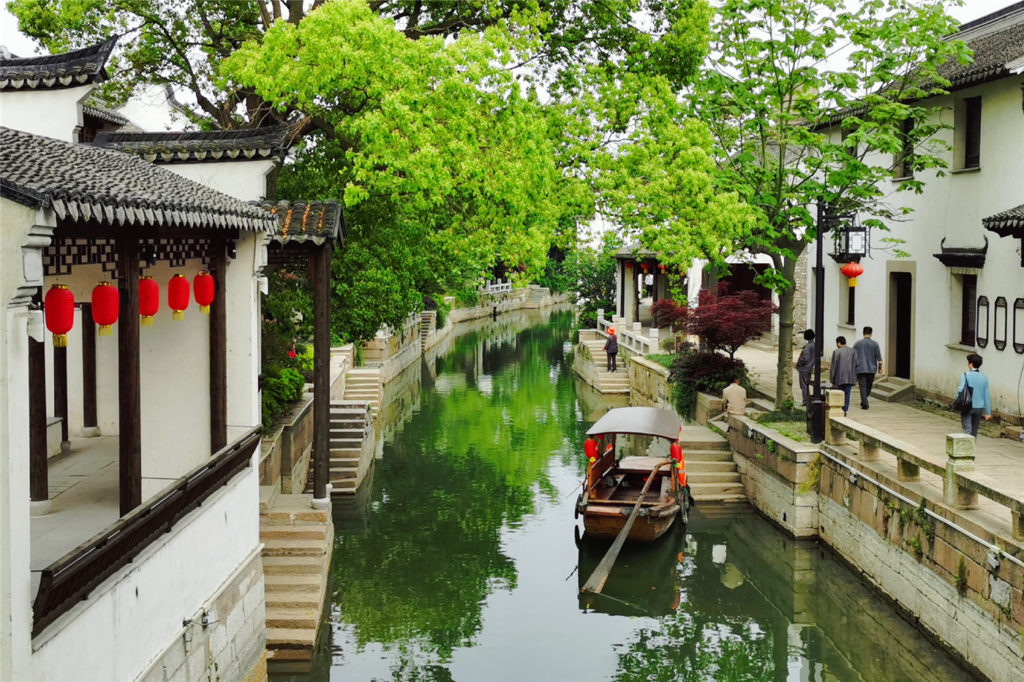
The gardens in Suzhou, Jiangsu Province, are praised as the most beautiful throughout the country and are the models and representatives of Chinese classical gardens. It presents the typical characteristics of the south of the Yangtze River area with a scene of delicate bridges and flowing water, the exquisite and elegant classical gardens, the magnificent mausoleums of emperors, and the thousand-year-old famous temples with a long history. All of the sceneries together constitute the picturesque scene of Jiangsu Province. Moreover, it has always been full of the atmosphere of profound culture and long history, making it a good place for tourism.
Zhejiang

The most famous thing in Zhejiang is the pretty scenery of West Lake. The water network is intertwined in Zhejiang, from Hangzhou to Shaoxing and Ningbo, and the terraces are crisscrossed. Zhoushan is an island with magnificent mountain and sea scenery. The residents here choose to live near the water, quarry stones to build bridges, and develop a unique lifestyle. Both the natural landscape and cultural heritage here in Zhejiang are vibrant, allowing you to feel the beauty of ancient tradition and modern civilization at the same time.
Which one attracts you most among these 34 provinces in China?


